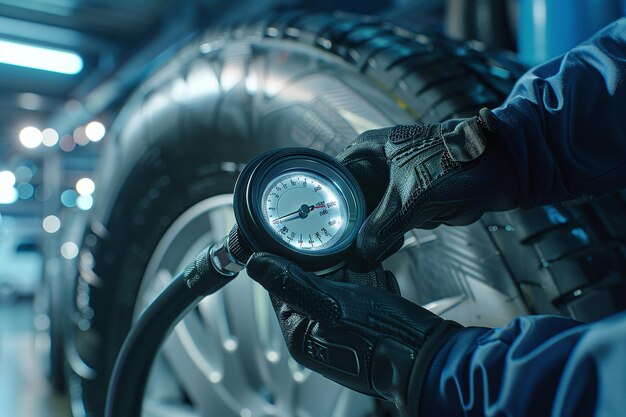Essential Guide to Checking U-Joints for Optimal Performance
Maintaining a vehicle in peak condition involves a detailed inspection of numerous components, each playing a crucial role in the overall operation. Among these parts, certain connections should draw particular attention, as they contribute significantly to the smoothness and efficiency of motion. Recognizing issues within these connections can lead to enhanced driving experiences and extended lifespan for your automobile.
Understanding the significance of these connections is essential for any automotive enthusiast or owner. Anomalies in these areas can result in troubling sounds or erratic behaviors while driving, which could indicate deeper mechanical issues. Proactive evaluation of these components can help in identifying problems early, thus averting more extensive repairs down the line.
Gaining insight into the condition of these crucial parts not only ensures a more reliable ride but also improves safety on the road. By routinely observing their status, one can guarantee that the connection points remain resilient, allowing for efficient power transfer and smoother operation. Embracing a hands-on approach can lead to a more rewarding experience behind the wheel.
Understanding the Role of U Joints
Component elements within a machine or structure work cohesively to ensure smooth operation and longevity. Among these critical parts, certain connections facilitate movement and provide flexibility, significantly influencing overall efficiency and reliability.
These particular connectors serve essential functions in various applications:
- Allowing rotational movement between shafts
- Compensating for misalignments caused by suspension or terrain
- Reducing stress and wear on connected parts
- Contributing to noise and vibration dampening
In different types of machinery, the importance of such connectors is evident. They enable seamless transfer of power and ensure that energy is not lost during operation. Understanding their role helps in recognizing potential issues and maintaining machinery in peak condition.
Regular inspections of these connectors contribute to a greater lifespan of the equipment and enhance its efficiency, allowing users to enjoy smooth operations while minimizing repair costs.
Signs of Worn U Joints
Regular observation of certain indications is essential to maintaining the functionality of pivotal components in automotive systems. Identifying these symptoms can prevent further complications and ensure a smoother driving experience.
1. Unusual Noises: A common sign of deterioration includes clunking or squeaking sounds that emanate from the drivetrain during acceleration or deceleration. These noises often signal excessive wear.
2. Vibration: Intense shaking or vibrations can manifest while driving, especially at higher speeds. This often suggests imbalance or damage within the connecting elements.
3. Increased Play: Excessive movement or play in the driveshaft can be felt when reaching under the vehicle. A noticeable looseness is a clear indication of wear.
4. Irregular Tire Wear: If tires exhibit uneven wear patterns, it might hint at issues in the drivetrain’s alignment, potentially caused by compromised links.
5. Difficulty Steering: If steering becomes imprecise or unresponsive, it could indicate stress in the drivetrain affecting overall maneuverability.
Being vigilant about these signs enables timely interventions, prolonging the lifespan of key structural elements and enhancing overall safety on the road.
Tools Needed for Inspection
Ensuring that components in your automobile function efficiently requires the right instruments. Having the proper equipment not only simplifies the process but also enhances the accuracy of your findings. This section outlines essential tools that are beneficial during the assessment procedure.
Essential Instruments
To begin, a variety of hand tools can make the evaluation straightforward. A wrench set is crucial for loosening or tightening bolts and securing components. Moreover, a screwdriver set is indispensable for any adjustments needed. These basic tools form the foundation of your inspection toolkit.
Advanced Tools
In addition to hand tools, consider utilizing specialized equipment to gain deeper insights. A rubber mallet can assist in testing for any play without damaging parts. Furthermore, employing a torque wrench ensures that connections maintain appropriate tightness, while a flashlight illuminates hard-to-see areas, making it easier to spot potential issues.
Step-by-Step U Joint Examination
This section provides a comprehensive guide to evaluating the critical connections that contribute significantly to the smooth operation of your automobile. Careful observation and methodical assessment can help in identifying potential issues that may affect the overall functionality of your system.
Preparation for Inspection
Before beginning the assessment, ensure that the area is safe and well-lit. Gather the necessary tools, including a wrench, a grease gun, and a reliable set of gloves. Follow these initial steps:
| Steps | Description |
|---|---|
| 1. Elevate the Vehicle | Use jack stands to securely lift the automobile, ensuring stability before proceeding. |
| 2. Remove Protective Covers | Take off any shields or covers that obstruct access to the specified components. |
| 3. Visual Inspection | Carefully examine the area for any signs of wear, rust, or damage. |
Detailed Examination Process
Once initial preparations are complete, continue with the following detailed evaluation:
| Steps | Description |
|---|---|
| 1. Manual Movement | Gently twist and turn each connection to detect any unusual slack or stiffness. |
| 2. Lubrication Check | Assess lubrication by applying a small amount of grease to each point, observing if it distributes evenly. |
| 3. Listen for Noises | With the vehicle running, listen for any abnormal sounds indicating underlying issues. |
Common U Joint Issues Explained
Understanding the frequent problems associated with these crucial components is vital for maintaining functionality in any automobile. These issues can lead to serious ramifications if left unaddressed, impacting overall drivability and safety.
- Wear and Tear: Over time, the constant rotation and stress can cause deterioration, resulting in noticeable play.
- Grease Leakage: Inadequate lubrication can lead to friction, which may ultimately result in failure.
- Corrosion: Exposure to moisture and road salt can cause rust, weakening the structure and compromising its integrity.
- Misalignment: Improper installation or wear can lead to angular misalignment, causing vibrations and excess strain.
- Noise: Unusual sounds such as clinking or popping during operation can signal underlying issues requiring attention.
Identifying these challenges early can prevent extensive damage and ensure smooth operation. Regular inspections are essential in spotting these concerns before they escalate.
Maintaining U Joints for Longevity
Ensuring the durability and efficiency of essential components within machinery requires consistent care and attention. Regular maintenance practices not only extend their lifespan but also prevent unforeseen issues that may arise from neglect. Understanding the best approaches to sustain these critical parts is key to achieving reliable functionality.
Regular Inspections
Performing frequent examinations can help identify potential wear and tear early on. Consider incorporating the following steps into your routine:
- Visual checks for any signs of rust or damage.
- Listening for unusual noises while operating.
- Observing any vibrations that differ from the norm.
Lubrication Practices
Proper lubrication plays a vital role in the lasting nature of these components. The following recommendations ensure optimal functioning:
- Use quality lubricant suitable for the specific application.
- Apply lubricant at recommended intervals.
- Avoid over-lubricating, as it can attract dirt and debris.
By adhering to these practices, one can significantly enhance the durability and reliability of these integral components, ultimately promoting a smoother operation overall.
Q&A: How to check u joints
What are the signs of a bad u-joint in a vehicle?
Common signs of a bad u-joint include unusual vibrations while driving, clunking noises when shifting gears, and grease leakage around the u-joint. If you notice these symptoms, it’s essential to check the u-joint immediately.
How does a bad u-joint affect the drive shaft?
A bad u-joint can lead to improper alignment of the drive shaft, causing excessive vibrations and potential damage to other components. Over time, this misalignment can result in a complete failure of the drive shaft.
Where can I find information about bad u-joints on automotive forums?
Automotive forums are a great resource for information about bad u-joints. You can search for specific threads discussing symptoms, solutions, and experiences shared by other users who have faced similar issues.
Can a bad u-joint cause damage to the bearing in the drive shaft?
Yes, a bad u-joint can cause excessive strain on the bearing in the drive shaft. If the u-joint is not functioning correctly, it can lead to premature wear or even failure of the bearing over time.
What tools do I need to replace a bad u-joint in my vehicle?
To replace a bad u-joint, you’ll typically need a socket set, a hammer, a u-joint press or a vice, and possibly some grease for reinstallation. Having these tools on hand will make the process much smoother.
How often should I inspect my vehicle’s u-joint for signs of wear?
It’s advisable to inspect your vehicle’s u-joint at least once a year or during regular maintenance checks. Early detection of a bad u-joint can prevent more extensive damage to the drive shaft and other components.
What is the average cost of replacing a bad u-joint?
The average cost of replacing a bad u-joint can range from $100 to $300, depending on labor costs and whether you choose to replace it yourself or have it done at a shop. This cost may vary based on your vehicle make and model.
Can I drive with a bad u-joint, or is it unsafe?
Driving with a bad u-joint is not recommended as it can lead to further damage to the drive shaft and other components. It may also pose safety risks due to potential loss of control or sudden failure while driving.
What are some preventative measures to avoid bad u-joints in the future?
To prevent bad u-joints, regularly inspect them for wear, ensure proper lubrication, and avoid overloading your vehicle. Keeping an eye on your drive shaft’s alignment can also help maintain the health of your u-joints.
Are there any specific brands known for producing high-quality u-joints?
Yes, several brands are recognized for producing high-quality u-joints, including Spicer, Moog, and ACDelco. Researching user reviews on automotive forums can provide additional insight into which brands have the best reputation for durability and performance.


